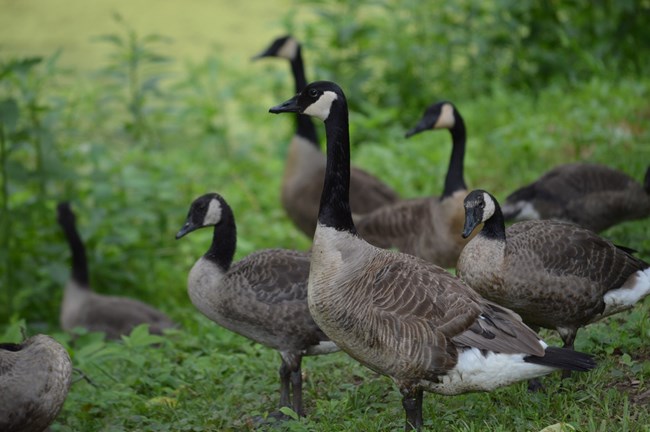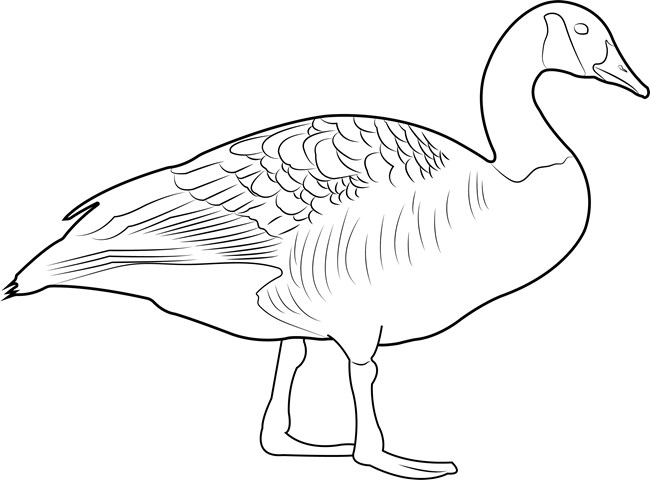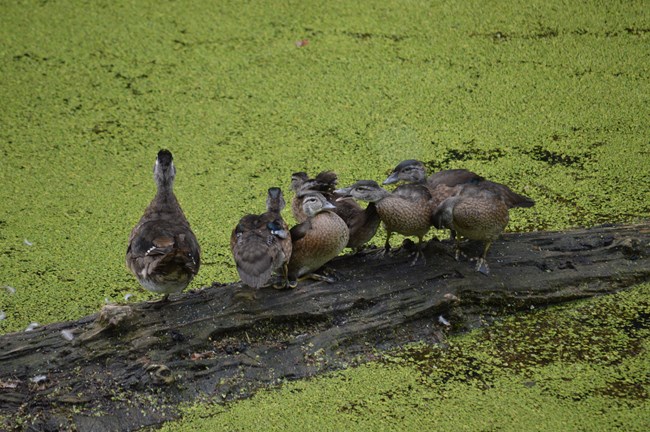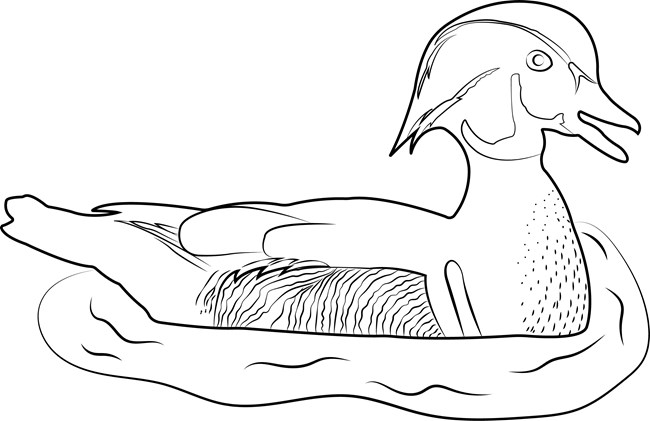|
Waterfowl are known for two common characteristics: they tend to gather in large groups called colonies during their nesting seasons and they like to get all or most of their food from the water. These birds also like to live by water like rivers, lakes, and other bodies of fresh water.

NPS Photo/A. Cook Canada Goose (Branta canadensis)• Canada Geese choose their mates “assortatively” where larger birds choose larger mates and smaller birds choose smaller mates• When threatened the Canada Goose pumps its head, opens its beak with it’s tongue raised, makes hissing noises, honks, and their neck feathers vibrate • During spring and summer, geese like to eat grasses and sedges. In fall and winter, geese eat more berries and seeds 
NPS/Intern Tristan Thomas Identification Information:• Size: Goose sized or larger (large bird)• Color: Black head with white cheeks and chinstrap. Black neck with tan lower neck and belly with a brown back. 
NPS Photo/A. Cook Wood Duck (Aix sponsa)• Wood Ducks love to eat seeds, fruits, insects, and some small aquatic species• They are strong fliers and can fly up to speeds as fast as 30 miles per hour • Wood Ducks live in bottomland forests, swamps, freshwater marshes, and beaver ponds 
NPS/Intern Tristan Thomas Identification Information:• Size: Between a crow and goose (Medium)• Color: Males have a glossy green head with white stripes, they have dark brown sides with a white belly. Females are a gray-brown with white spots on their chest
All of the above information is an abbreviated version of information gathered from the Cornell Lab of Ornithology. Please visit their website for more in-depth bird information.
|
Last updated: September 13, 2019
